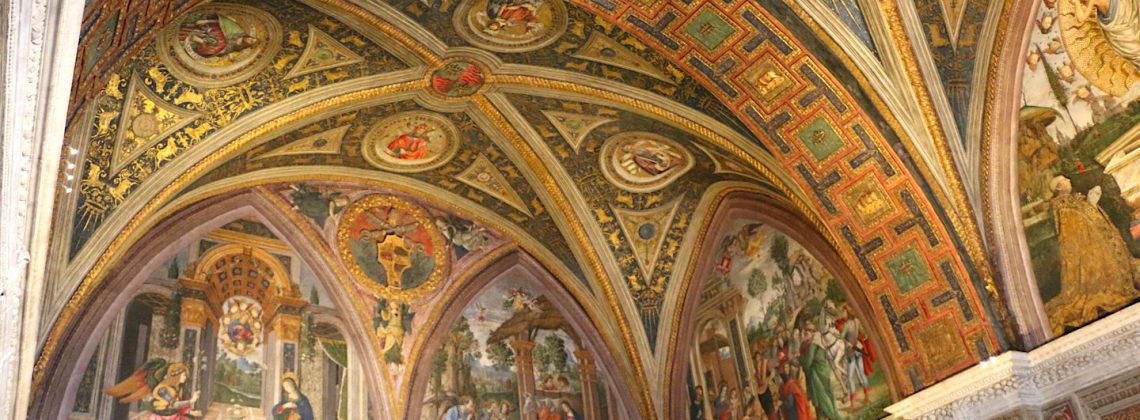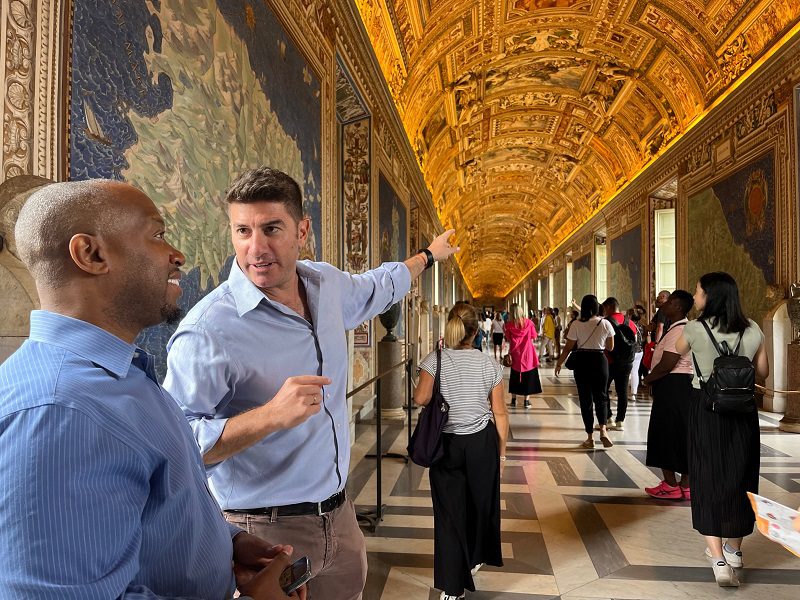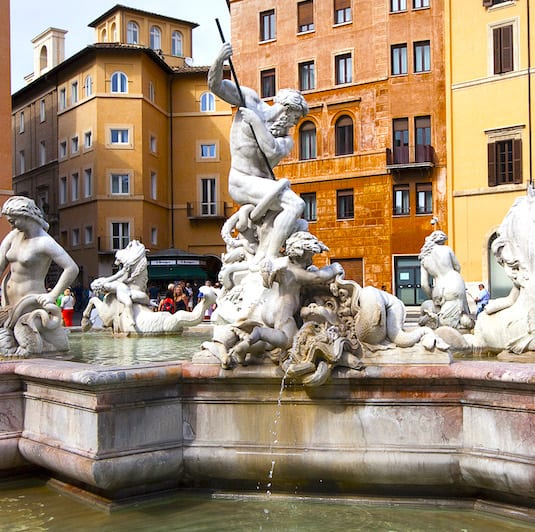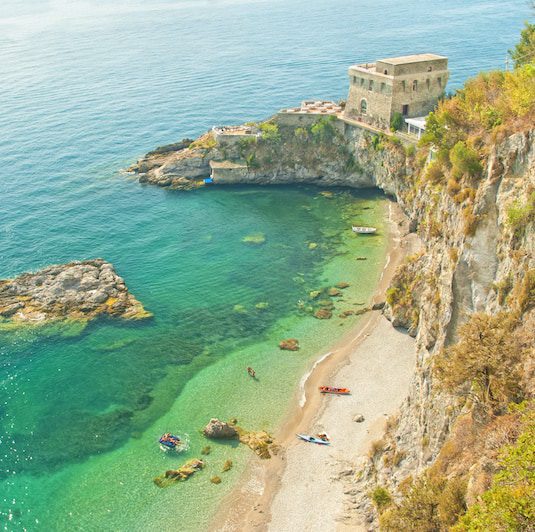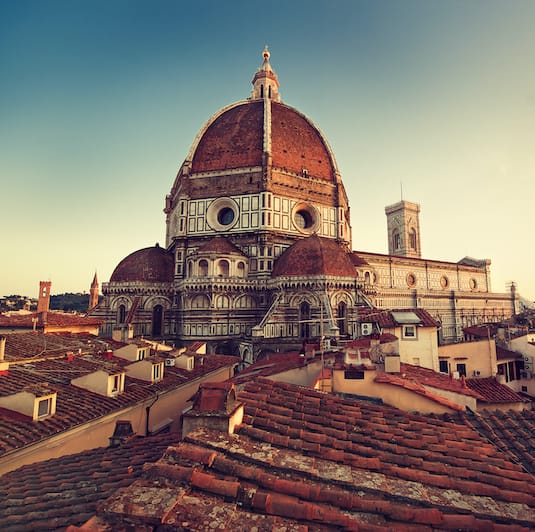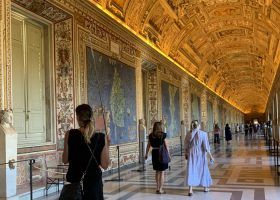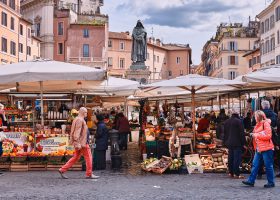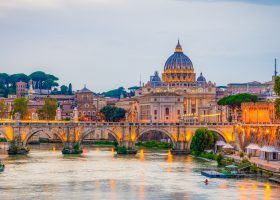Alexander VI Borgia was arguably the most scandalous Pope that the papacy ever had. The Borgia Apartments are now included in the Vatican Museums, which is a highlight of many of our Vatican tours. In this guide, you can find some background information on the private Borgia Apartments and how to visit these exquisite rooms.
Pro Tip: Planning your visit to the Vatican in Rome? Bookmark this post in your browser so you can easily find it when you’re in the city. See our guide to Vatican City for more planning resources, our top Vatican tours for a memorable trip, and the top things to see in Vatican City.
What To See in the Borgia Apartments
Visiting the Vatican Museums is a unique experience because of its fascinating history. Some of the most powerful people in Western history would have admired the same art pieces in the Vatican that you’re going to admire there.
In certain rooms, like the Borgia Apartments, you’ll walk through the pope’s bedroom as well as rooms where murder and other scandalous activities took place. If you visit on your own, you may not find out about these interesting historical details while you’re actually there. This is why I highly recommend a guided Vatican tour, so you not only learn about what you can see but also what you can’t see.
The Borgia Apartments are just one area of the Vatican Museums you can visit. As you plan your visit, check out our ultra-comprehensive list of what to see at the Vatican, written by a licensed Vatican guide.
Not ready to book a tour? See if a Vatican tour is worth it.
Who Were the Infamous Borgias
If you’ve watched the Netflix series “The Borgias,” then you’ll immediately understand why this family was so famous—or infamous. Even if they were unfairly slandered by later generations, there must have been some truth to the many accusations.
Rodrigo Borgia was a Spaniard from Aragon who was elected pope in 1492. He also happened to be the nephew of a previous pope, Callixtus III. The main cause for the rumors was quite simply that the Borgia pope had children. Among them were the beautiful Lucrezia Borgia and the sometimes cruel Cesare Borgia.
He was also more of a temporal monarch than a spiritual leader who terrorized cardinals and princes who didn’t submit to him. As we go through these beautifully decorated rooms, bear in mind that they were the private living quarters of the pope and his immediate family. Due to their reputation and the harm they did to others, future popes refused to live in these apartments.
Never presume that I will not act on my worst instincts.
Cesare Borgia—Son of Pope Alexander VI
6. Room of the Sibyls
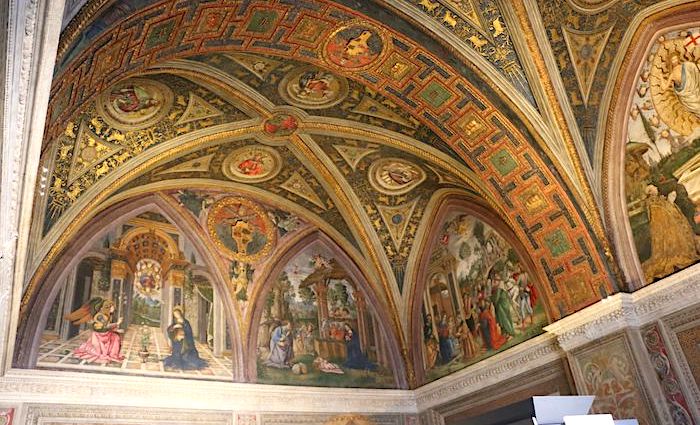
This is the first room you’ll see as you descend the stairs from the floor above. According to legend, it was in this room that a horrible crime took place in the year 1500. Cesare Borgia, the firstborn son of the pope, killed the 21-year-old husband of his sister Lucrezia.
Rumor has it that insane jealousy led him to commit the crime. It was also in this room, shortly after the death of his father the pope, that Cesare was imprisoned by the new Pope Julius II.
The artist Antonio da Viterbo was the main painter of this room. While observing the frescoes, you might find the year the room was completed (1494) painted on the ceiling. This space is decorated with several different motifs that express the artist’s imagination and personality. There are many mythological characters all over the room and also some amazing reproductions of plants and fruits.
What might surprise you is the fact that the painter chose to include several astrological symbols, specifically the Taurus sign painted several times all over the room. The Borgia’s crest used to feature a bull in the middle and Antonio da Viterbo decided to pay homage to the family this way.
5. The Room of the Creed
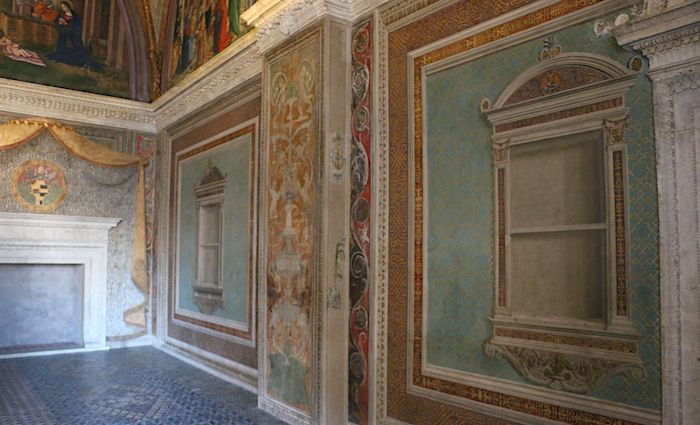
This room was painted mostly by the workshop of Pinturicchio. They decided to follow the usual project by focusing on the ceiling. However, for this area, the painter opted for more classical work and reproduced several apostles and saints. The artists also decorated the room by inserting several fine geometrical figures, which are not easy to reproduce without deep art studies.
The Catholic figures portrayed in this space have a very specific role: to express the strong union between the Old Testament and New Testament. According to some art critics, the style adopted by Pinturicchio and his school for this specific space can be considered a mix between the famous Tuscan and Umbrian styles.
Popular Vatican Tours
Best Selling Tour
Privileged Entrance Vatican Tour with Sistine Chapel
Without the right access, visiting the Vatican means fighting crowds, long waits, and missing the most significant rooms and works of art. Our privileged entrance tour offers more than just entry—it’s an immersive experience led by a storytelling guide who brings the Vatican to life. Skip the line and explore the Vatican Museums, including the Raphael Rooms and the Sistine Chapel, with engaging insights that make each moment memorable and meaningful.
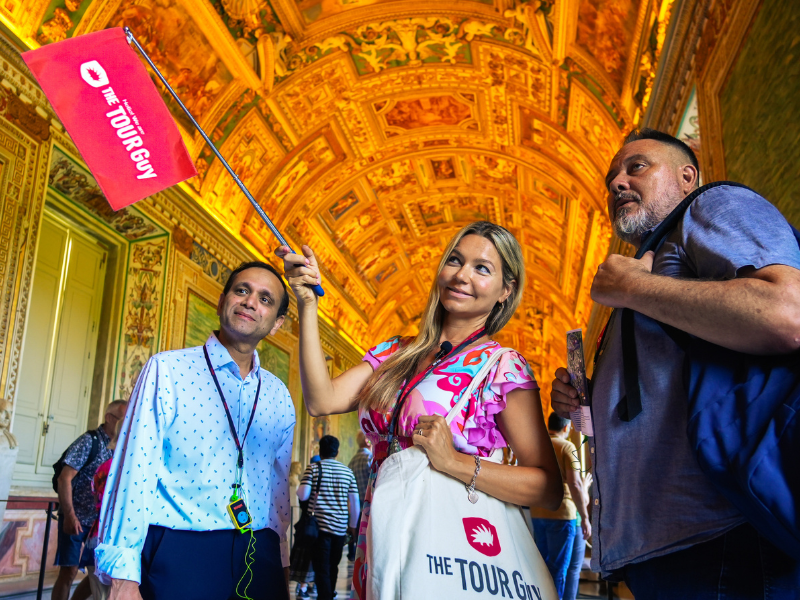
Exclusive Value
Vatican at Closing Time with Sistine Chapel
Exploring the Vatican during the day can mean massive crowds and enduring long lines. With skip-the-line access and an engaging guide, you’ll uncover the captivating stories behind the galleries and enjoy the awe-inspiring beauty of Michelangelo’s Sistine Chapel in a serene setting. Your friendly guide offers a rare perspective, allowing you to experience the Vatican Museums after most visitors have left, making your visit truly extraordinary.
See Prices
Not ready to book a tour? Check out our best Vatican tours to take and why.
4. Room of the Liberal Arts
The first thing that pops out at you is the fireplace—it’s huge! The Room of the Liberal Arts was the private dining room and study of the pope. It also happens to be the room where, upon his death, his body lay in state. When you walk in, you can still feel the presence of such a powerful personality in the room. If only the walls could speak!
On the ceiling, you’ll see the personification of all the Liberal Arts such as geometry, rhetoric, figurative art, and literature. The characters embodying each art are all portrayed sitting on a throne to emphasize the importance and necessity of each of them.
For example, Cicero expresses the importance of rhetoric, and Euclid for geometry. There is still discussion among experts about the character representing figurative art. The most credited theory assumes that the man sitting on the throne could be the painter Bramante.
3. Room of the Saints
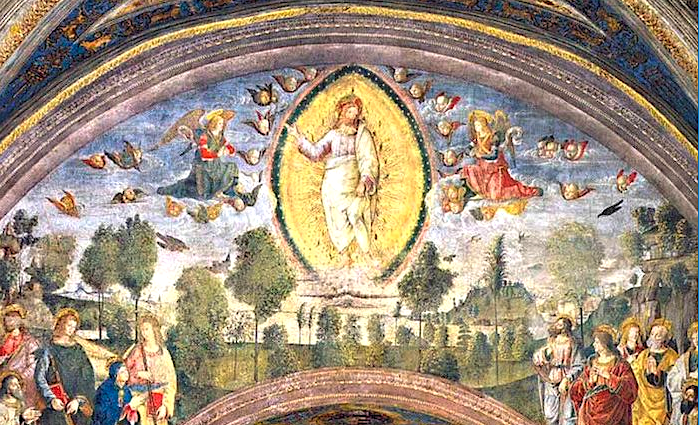
The Room of the Saints is probably the best-known of them all. This space, in particular, is a clear homage to the reigning pope, and, specifically, to the divine justice that only this human being can profess.
To communicate this theme, the artist Pinturicchio chose the Egyptian gods, Isis and Osiris, from the story written by the Latin poet Ovid. All of the paintings should express the constant fight between evil, portrayed as night, and good, or day.
Also, a specific historical character is displayed in these frescos: St. Catherine of Alexandria. I would say this is Pinturicchio’s masterpiece. The abundant use of gold recalls the Medieval world, which is so common in Pinturicchio’s work. In this room, there are some common references to the Borgia’s crest, such as the bull.
Without a doubt, The Disputation of Saint Catherine of Alexandria is the most beautiful and spectacular fresco in the Borgia apartments. In the painting, Pinturicchio has painted himself at the left angle of the lunette.
Enrico Bruschini—Art Historian and Official Vatican Tour Guide
2. The Room of the Mysteries of the Faith
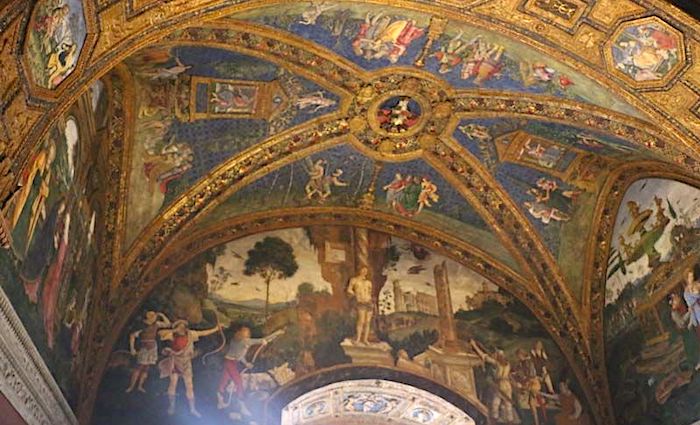
The Room of the Mysteries of the Faith was the last room Pinturicchio painted. It was probably used by the pope to host private functions or visits. The name, the Room of Mysteries, is due to the Virgin Mary’s seven Mysteries, a series of Catholic stories loved by Pope Alexander VI.
The peculiarity of this space is the perfect coincidence between the fresco paintings on the ceiling and the geometrical figures used for the floor. In every corner of the room, the artist decided to portray one of the seven Mysteries.
Of course, you should begin your visit by observing the first one: the Annunciation. Then, proceed to the Shepherd’s Adoration until you arrive at the Resurrection and Virgin Mary’s final Assumption. Pinturicchio decided to portray the Biblical Prophets in the corners of the room, so you might find, for example, David, Isaiah, and Solomon.
1. The Room of the Popes
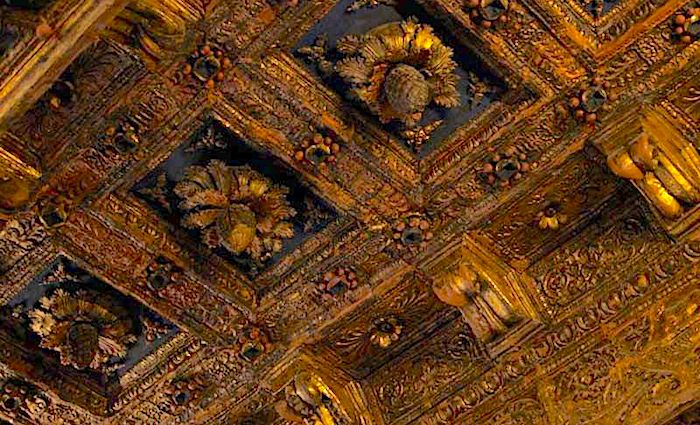
The Room of the Popes owes its name to the scrolls with the names of popes in the room. It is the largest of all the rooms and the pope used it to host official ceremonies, audiences, and solemn banquets. It was also used in recent times as a dining room for cardinals who were united during the conclave to elect a new pope.
Unfortunately, Pinturicchio’s series of frescoes for this space didn’t survive. Pope Alexander himself barely survived when the roof fell in on him. He narrowly escaped a sure and painful death! A later pope, Leo X ordered Giovanni da Udine and Perino del Vaga to decorate the room with the signs of the zodiac, constellations, and planets.
Vatican Tours with Borgia Apartments
Supposedly, if you stand in front of each art piece for one minute in the Vatican Museums, it would take you 12 years to see everything. How incredible is that! While it’s certainly possible to visit the museums on your own, I highly recommend you join a tour guide.
Not only will a tour guide get you skip-the-line access, they’ll also guide you through the Vatican Museums quickly. Your guide will get you in and out before you go into overload without missing anything important.
Best of all, you’ll hear all the intriguing stories and history that make this museum and its collections so fascinating. It’s an added layer that will make your Vatican visit all the more meaningful.
There are lots of Vatican tour options to suit your interests and schedule, compare our best Vatican tours. In our Privileged Entrance Vatican tour and others, you’ll see the Borgia Apartments up close, so check them out and reserve your spot!
Not ready to book a tour? Find out if a Vatican tour is worth it.
Here’s Where To Stay in Italy’s Most Popular Destinations
Rome, Florence, Venice, Amalfi Coast, and Capri

